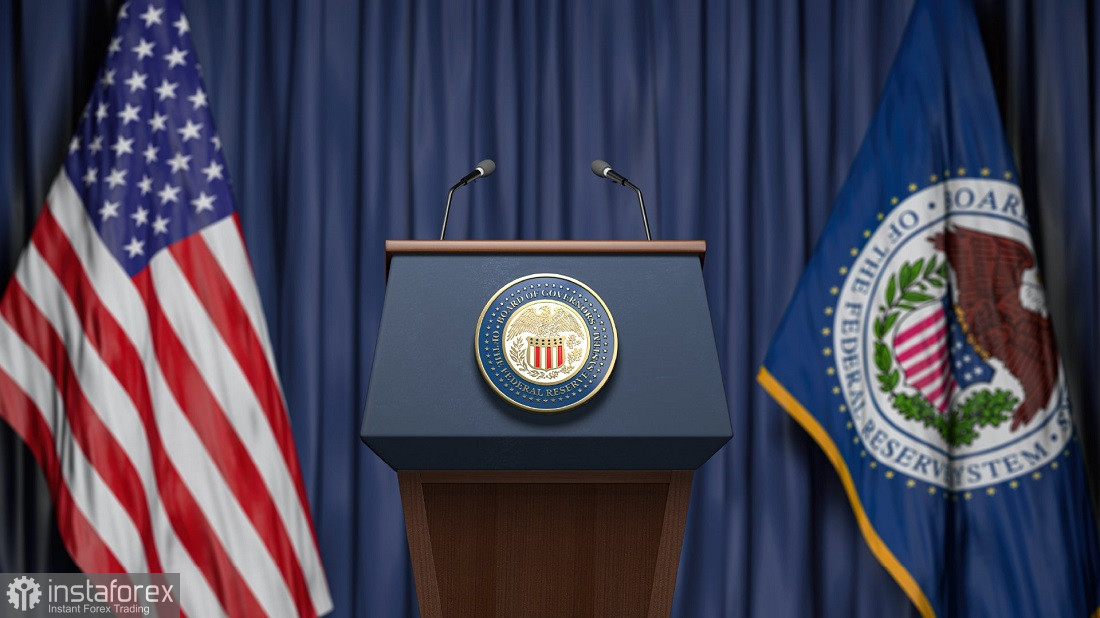We'll learn the results of the Federal Reserve's latest policy meeting on Wednesday. On one hand, it's a routine event with a predetermined outcome. On the other hand, the currency market has reached a standstill in anticipation, as though this is a long-awaited film with an unpredictable plot but a well-known ending.
There's little doubt the Fed will maintain all current monetary policy parameters, keeping the interest rate at 4.5%. According to the CME FedWatch tool, the probability of this scenario is 96%. Meanwhile, the market places a 31% chance of a rate cut at the next (June) meeting.
In other words, the market is confident the Fed will hold rates steady this month and sees little chance of any change in June either. So, where is the intrigue?

It lies in the messaging. In recent weeks, Fed Chair Jerome Powell has been under a barrage of criticism from the U.S. President, who publicly dubbed him "Mr. Too Late." Just two days ago, Trump again called on the Fed to cut rates swiftly, citing the European Central Bank's 175 basis points of easing in the current cycle.
No one doubts that Powell won't succumb to presidential pressure—he's been through this before during Trump's first term. Still, market attention will focus on the tone of the FOMC statement and Powell's comments. Even without Trump's pressure, the Fed faces a difficult situation: rising inflation expectations on one side and mixed economic indicators on the other. These nuances will help shape expectations for future rate moves.
According to University of Michigan data, one-year inflation expectations in the U.S. jumped to 6.5% in April (up from 5.0% in March), the highest since November 1981. However, April CPI and PPI data will be released after the May Fed meeting, so the FOMC must rely on outdated March figures. Meanwhile, real-time data paints a gloomier picture, forecasting further inflation acceleration. Tariffs have already pushed up prices, not just for imports but also for U.S.-made goods with imported components. As such, inflation is the Fed's problem number one.
The Fed will likely downplay other macro indicators showing early signs of a slowdown. The situation can be summarized as: "It's not that bad—yet."
Yes, the consumer confidence index in April dropped to 86, and the ISM manufacturing index slipped to 48.7—both multi-month lows. However, the ISM services index stayed in expansion territory at 51.6, and April's Nonfarm Payrolls showed resilience: employment rose by 177,000, average earnings held at 3.8%, and unemployment remained at 4.2%.
Even the disappointing Q1 GDP report raised more questions than answers. The surprise 0.3% contraction (vs. a forecasted +0.4%) was primarily driven by a 41% surge in imports, as U.S. companies stocked up ahead of Trump's new tariff policy.
Stagflation risks are rising: tariffs inflate prices while weighing on broader economic performance. Still, the current situation allows the Fed to take its time before cutting rates, as recent data shows the U.S. economy is still relatively strong, albeit fading.
What does all this suggest?
First, the Fed will keep all monetary policy settings unchanged at the May meeting. Second, it will likely acknowledge rising inflation expectations, but argue that it lacks enough data to assess the full impact of tariffs. Powell is expected to repeat his April message that the Fed must wait for clarity before acting. It's unlikely FOMC members will endorse Governor Christopher Waller's dovish stance—he recently said he would support an early rate cut if tariffs increase recession risk, even amid surging inflation. On the contrary, the May meeting will likely show that the Fed is more focused on fighting inflation than addressing recession fears.
In short, the Fed will maintain a wait-and-see approach and hint at keeping rates unchanged through June. This outcome is already priced in (as reflected by CME FedWatch), so the U.S. dollar is unlikely to react much. The EUR/USD pair will probably remain in the 1.13 range, even if volatility flares briefly. The Fed and EUR/USD traders will stay in a holding pattern until the tariff negotiation saga concludes—a saga that hasn't even started in earnest with China.





















